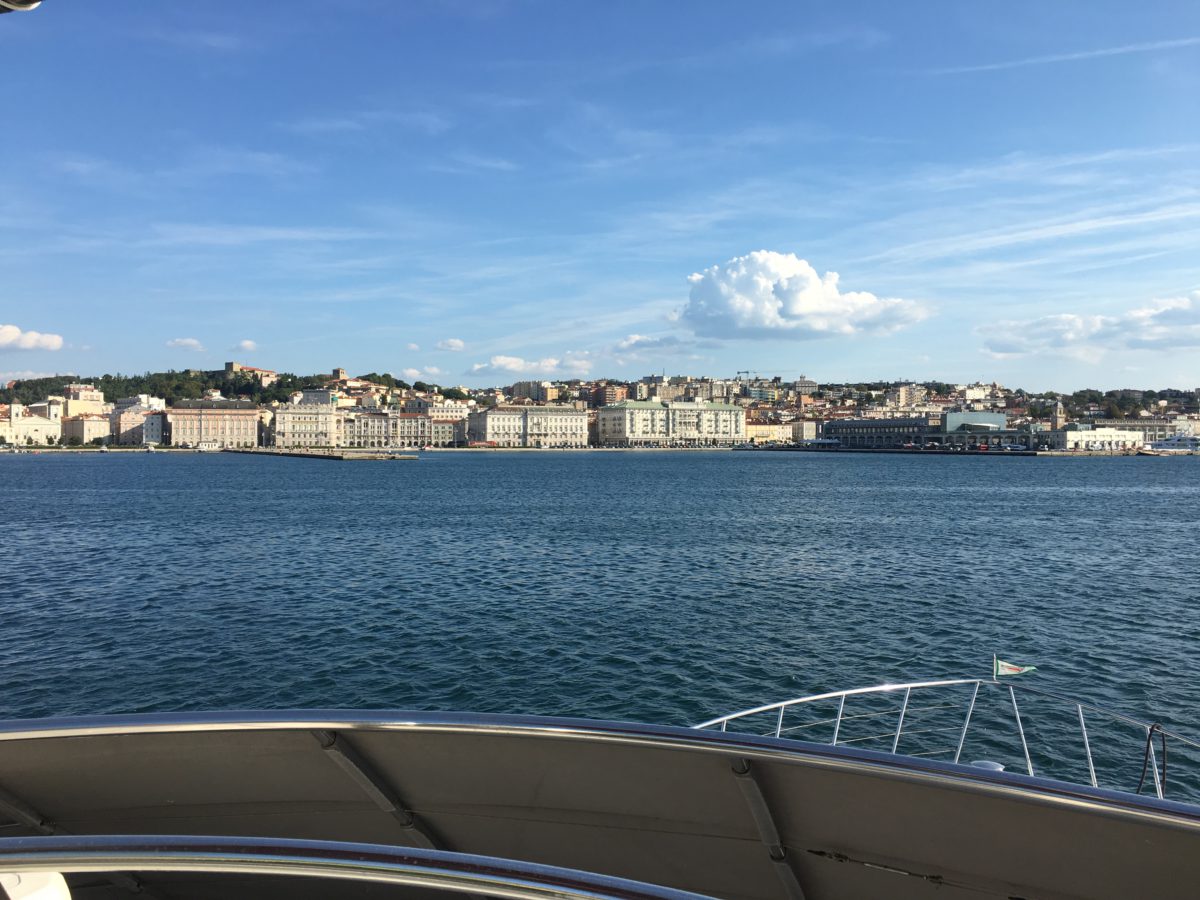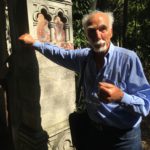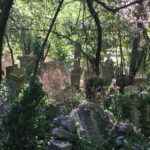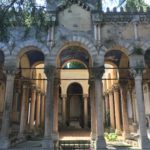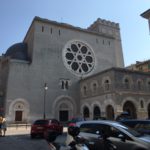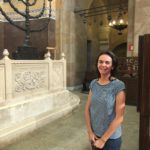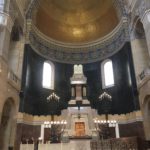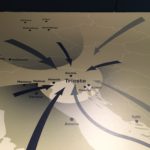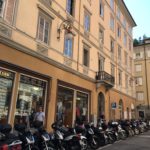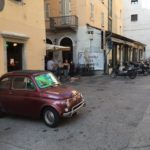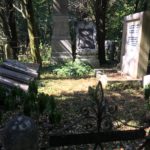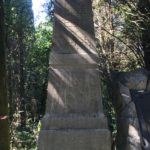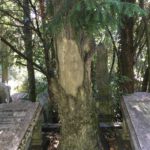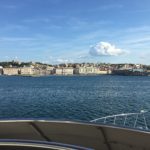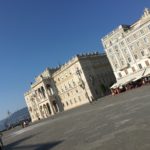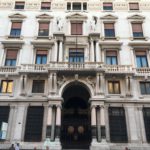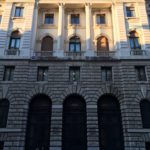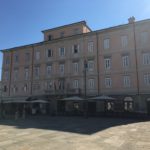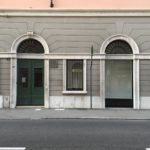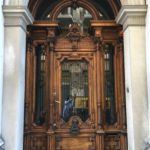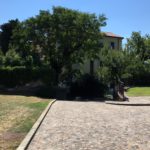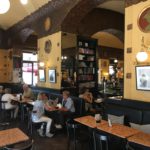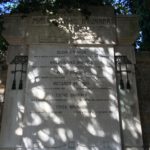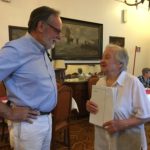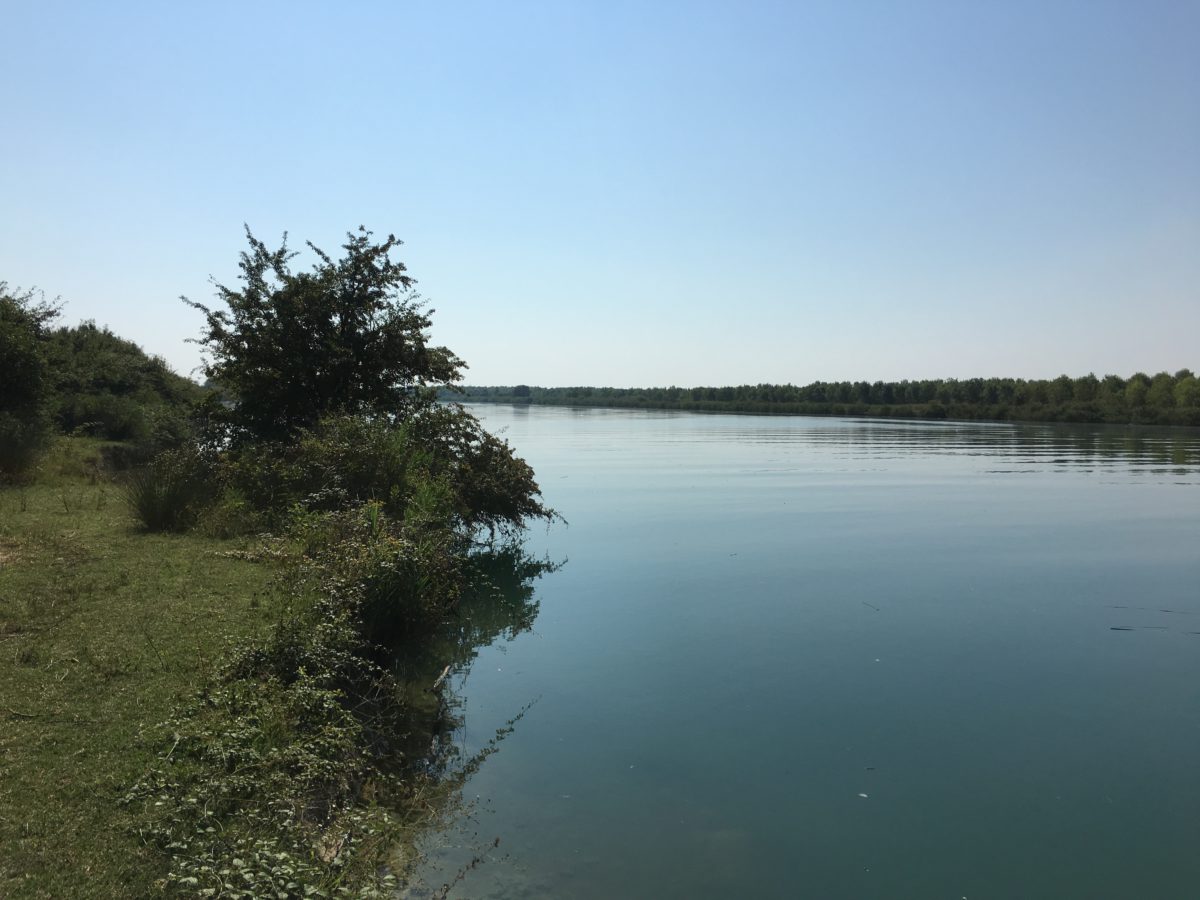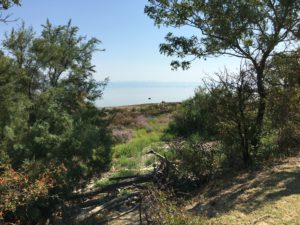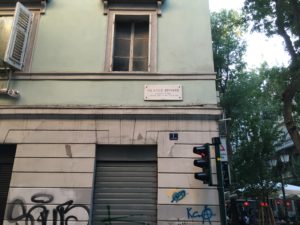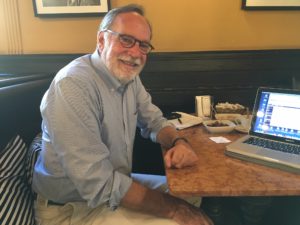I have an appointment on the Jewish Cemetery of Trieste. Livio Vasieri, the archivist of the Jewish community wants to help me with the graves of the Hohenemser tribes who settled here in the 19th century. The cemetery on the peaceful hill of Santa Anna borders the Greek Orthodox cemetery and the Protestant one. The British have their military cemetery around the corner. And to the south, the Catholic occupies the greatest part of the hill. Naturally.
Behind the gate Livio opens for me, a jungle is waiting, with all the glory of remembrance the dearest ones of a saturated middle class and a grand bourgeois culture could expect.
On the left, the mausoleum of the Morpurgos occupies the primary position. Next to it lies the mausoleum of the Morpurgo de Nilma, who proudly exhibit their Egyptian heritage, after a few generations spending their life along the Nile. The grandeur is striking, as is the relaxed willingness to leave all this grandeur to the pace of time and the organic energy of a forest, which is slowly taking over control of the site, season by season.
Livio is still mastering the territory, finding the small markers on the ground that indicate the different compounds of the graveyard, even if he has to use his big brush in order to clean them from dust and falling leaves. I had given him the names of the families I am looking for, the Brettauers, Bernheimers, the Menz and the Brunners, when we met the day before in the breathtaking synagogue of Trieste.
Annalisa di Fant from the Jewish Museum gave me a tour through this house of prayer, which looks like a film set for a monumental tale of pharaohs and slaves. Only this time the somewhat excessive structure in the middle of everybody’s view serves the once oppressed, celebrating their liberation—and the tora, the law. Annalisa is happy to show me around and we exchange ideas for future cooperation.
I also run into Ariel Haddad, a Lubawitscher who has taken care of the Jewish museum for years. He is keeping his good humor, even if the liberal Jews of Trieste might not be exactly his cup of tea, with their synagogue with its giant organ and the women sitting downstairs along the men, separated only by a very transparent paravent.
But the master of the cemetery is Livio, the archivist. Without him I wouldn’t have a chance. The cemetery is not only infinitely beautiful, it’s also infinite. Some 12,000 gravestones are closely scattered in the growing forest. To find the single stones is a mystery, and even Livio has to consult the lists he brought from the archives. Maybe in a few years things will be slightly easier. Our colleagues from the Jewish Museum in Eisenstadt started to work this spring on a documentation of the Trieste cemetery, publishing some images on the internet. This time I have to do my own photographs—of “our crowd” —for our genealogy projects.
Sometimes a family occupied a mini-compound for its own kind, surrounded by a now rusty fence. The Brunners did this when they settled in Trieste. They would soon become successful in textile trade, banking and insurance companies, helping to turn the port of Trieste into the hub of the Hapsburg Empire’s trade in the Mediterranean in the 19th century. The same is true for the Brettauers, the Bernheimers, and the Menz. It’s the story of all their energy and commitment, and their willingness to take risks.
The Hohenemsers were forced to take such risks. When only the eldest son of a family was granted the official permission to marry and to start a new family (or better to continue the existing family and their title of residence in the town of Hohenems) the other children had no chance but to emigrate and leave for good. Their outlook for creating some business elsewhere was uncertain.
The Brunners (and the Menz) both made their imprint on the histories of the Generali and the Riunione, with much of the Banca Commerciale Triestina and other success stories that survived the end of the empire and the Italian takeover in 1918. The Brunner’s private houses still bear their traces. Walking with Giancarlo Stavro along the glorious palaces of commerce in the “Theresian” quarter of the center—with its rectangular grid of streets and its attempt to even triumph over its Viennese originals—he points here and there. And everywhere there is a Brunner story to tell. Meeting him and Helen Brunner (his cousin around a few corners) is a particular pleasure—and a school of irony. The twisted fate of Trieste—and also of Trieste’s Jewish families, thrown in between of belongings and loyalties—is indeed an experience better to take with some irony.
The story of how the Brunners survived the Holocaust has yet to be written. Some made it to Switzerland to join relatives there, only to return after the war. Some emigrated to England. Others survived in Italy. Only Egone Brunner’s name on the huge memorial of Massimiliano Brunner’s family on the Jewish cemetery does not mark the place where he rests. He was deported and killed in 1944.
A few years before, Trieste seemed like a safe place still, a port on the way to freedom. In 1940, Filippo and Fanny Brunner received a visit from second cousins in Vienna. Three year-old Gertrude Rosenthal and her parents were escaping from Europe, and on their way to New York. Many years later Gertrude—now Susan Shimer and editor of the Newsletter of the American Friends of the Jewish Museum Hohenems—would tell about the very few memories of her six days in Trieste, waiting for the ship that would take them over the ocean. What mattered most to her: The smell and the taste of her first oranges she would never forget. When Jessica Piper started this blog a few months ago while staying in Hohenems, she also told me Susan’s story —Susan is her grandmother. Sometimes the things that connect people throughout generations are very simple and profound.
Meeting the eldest of the living Brunners, Elisabetta (Betty) Stavro, in her home for the elderly, with her 98 years fully present and awake, is an encounter with irony too, most profound and moving. When we enter the room, Elisabetta calls for her daughter, caring for her like any other mother, except her daughter has long since been a grandmother herself.
But Elisabetta—born in the year of the battles of the Isonzo and the Piave, the last battles of World War I —only needs a few minutes to turn her attention to her nephew Giancarlo and me. And learning the details about the reunion in Hohenems next year she takes my hand, and promises all sincere: “When I am still around next year I will come for sure.” We take that seriously, Elisabetta.

